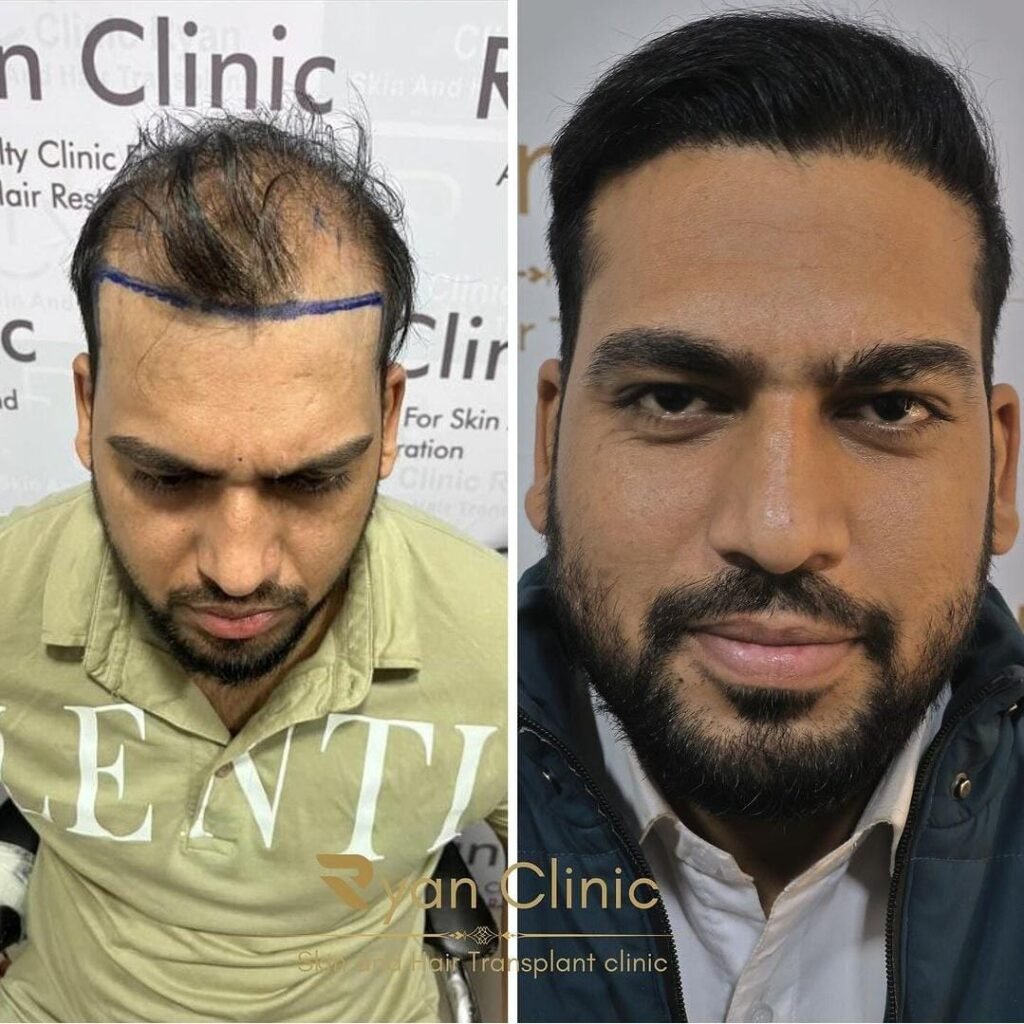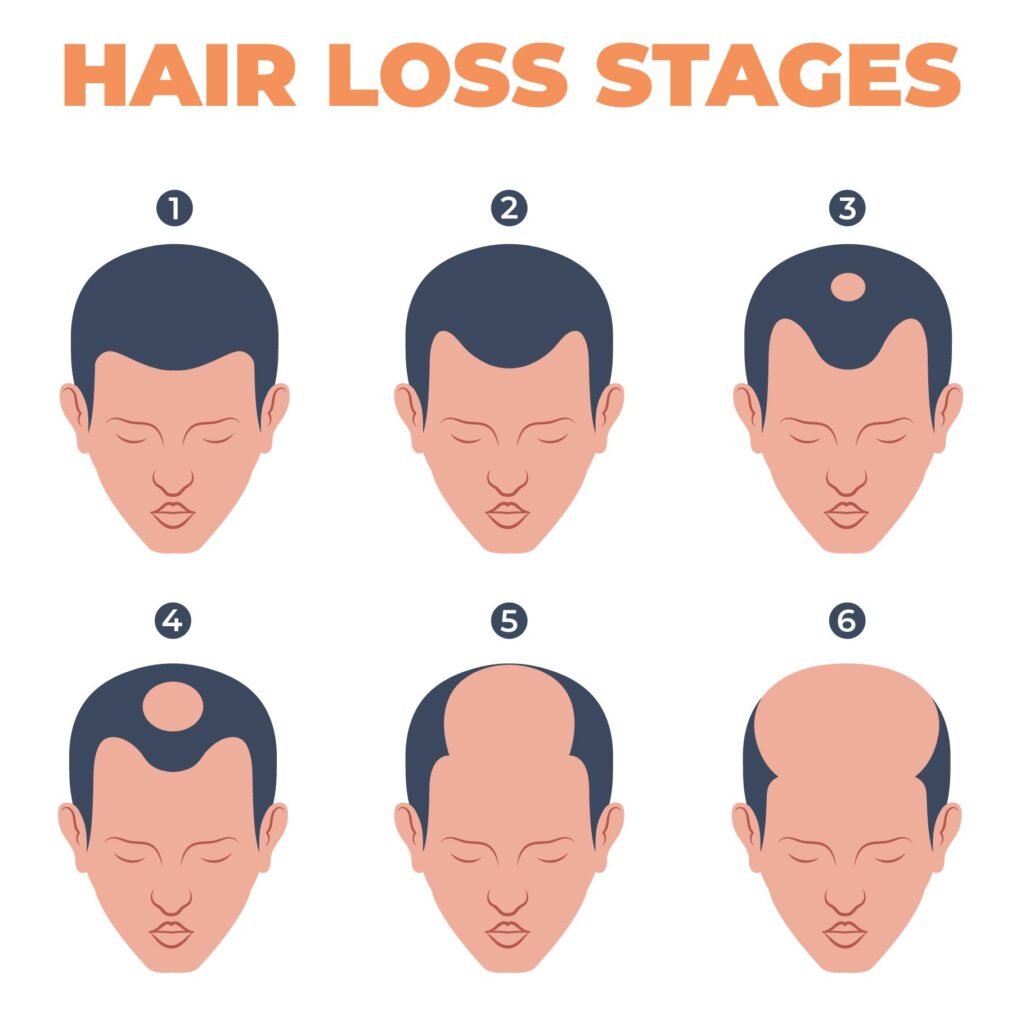
Introduction to Hair Transplant
Hair loss is heartbreaking because it mostly plays with one’s emotions and self-image. But there is a treatment that helps and gives the results – hair transplantation. Hair transplantation is becoming one of the most common forms of reconstruction since the practice has developed ways of improving techniques that guarantee fixed results. But what do we know about hair transplant, and why is it so famous? Okay, let’s get into the sphere of hair restoration.
Types of Hair Transplants
When it comes to hair transplants, there are three major techniques, each with its unique process and benefits:
Follicular Unit Transplantation (FUT)
In FUT, a strip of scalp that contains multiple hair follicles is excised on the donor area, usually at the back of the head. The strip is then divided into single hair follicles that are then grafted to the affected or receiving area. This method enables many grafts to be planted in one session this is suitable for patients who require many grafts to be transplanted.
Follicular Unit Extraction (FUE)
As compared to FUT, FUE entails the direct removal of hair follicles from the donor region. These follicles are then transplanted to the recipient site and this completes the surgery process. When it comes to side effects FUE has been known to be less invasive than FUT and scarring is not very noticeable hence why this procedure is favored by many.
Direct Hair Implantation (DHI)
DHI is the next level of the FUE method whereby the hair follicles are implanted into the scalp with the help of a special tool that does not require initial cutting. The technique enables better localization of the follicles, the rapid healing process, and the best survival rate of the transplanted follicles.
How Hair Transplant Works
The Science Behind Hair Transplant
Hair transplants involve the physical transfer of healthy hair follicles from the donor area to the recipient area where hair is thinning or completely bald. These implanted follicles also grow hairs naturally thus giving a permanent solution to the menace of baldness.
Hair Growth Cycle and Its Importance
Knowledge Of Hair Growth Cycle Is Important In Transplant Surgery. It is worth stating that hair can grow in three phases that include the anagen phase referred to as the active hair growth phase, the catagen phase the transitional phase, and the telogen phase, or the resting phase. FUE surgery focuses on the anagen phase which means rats for transplanting follicles are in their most expressive phase of growth.
Benefits of Hair Transplants
- Permanent Solution to Hair Loss: They offer the best way of combating baldness or thinning hair since they offer permanent solutions, unlike other procedures like wigs or medications.
- Natural Appearance and Growth: Since the transplant utilizes your hair, the impact of the hair transplant is very natural which would make the entire look very natural.
- Boost in Self-Confidence: Bringing back your hairline is a new lease in life and can change your outlook on life by giving you much-needed self-esteem.
Who Can Get a Hair Transplant?
Although hair transplant is a good solution for many people there are cases where they are not ideal. Perfect hair candidates are the ones with enough healthy hair in the donor area that may cover the thinning areas. General health is also an issue in the procedure which is done with minor cutting on the skin, although it affects thicker skin.

The Hair Transplant Process Step-by-Step
Consultation and Evaluation: It starts with the consultation where the surgeon meets the client, analyzes the hair loss issue, and the results one wants to achieve, and then advises the appropriate way to take.
Preparation for Surgery: Presurgery is also done on the day of surgery, though data on this are scanty. Some of the procedures that may be performed before the hair transplant may include the shaving of the donor region and the administering of local anesthesia.
The Surgery Itself: FUT contains harvesting of a strip of hair surrounding the head, FUE contains extraction of the hair follicles individually while DHI will have hair follicles transplanted directly to the area intended to receive hair transplants. It normally takes several hours to complete, but this is one of the best things that are worth waiting for.
Post-Surgery Care: In the surgery performances, one had to follow certain aftercare regulations as expected. You will need to restrict your activities if there is a need for prescribed medications and you will have to come for follow-up.
Recovery and Aftercare
After the surgery, you will feel some pain and swelling that should not last more than 3 to 4 days. You will begin to see that the hairs that have been transplanted start shedding within a week, a normal situation. Generally, they may take anything from 6 months to 1 year to come out in full so one has to be very patient when using peptides.
Potential Risks and Side Effects
Hair transplants, in most cases, are safe but just like any other surgeries they are associated with some risks. As reported by patients some side effects are likely to occur, these include, inflammation, skin rashes, and skin reddening. Rarely, infection or scarring may develop, but these are best prevented easily by adhering to your surgeon’s after-treatment advice.
Costs of Hair Transplant
The ranges can be quite different depending on the method of transplantation, the qualifications of the doctor, and the country where the surgery will be performed. It can take an average of $4,000- $15,000 on average depending on the place. While it may cost a lot of money it is often said that the payoff in the future outweighs the cost in the present.
Myths About Hair Transplants
- Hair Transplants Are Painful: This is because hair transplants are not very painful, thanks to the local anesthesia that is administered before the surgery.
- Results Are Not Natural: Techniques used in the current society make the transplanted hair look as if it naturally grows on the recipient’s head.
- Hair Transplants Are Only for Men: Hair transplants can also be helpful to women especially those who are experiencing hair loss situation.
How to Choose the Right Clinic
In choosing the right clinic, it will be wise to ask about the background of the surgeons, check the reviews from former patients, and make sure that the clinic complies with contemporary trends and methods.
Success Rates and Satisfaction
It is a proven procedure since the majority of the patients get the guaranteed result with natural-looking hair. It has been revealed that real-life success stories from people who have undergone the procedure cannot be explained.
Alternatives to Hair Transplant
If you do not want to have a hair transplant, then the other options available include Minoxidil, Finasteride, laser therapy, or wearing wigs and hairpieces.
The Future of Hair Transplantation
The field of hair transplantation is dynamic. Current research indicates that there’s considerable hope in engineering hair growth through stem cell therapy and hair cloning in the future.
Frequently Asked Questions (FAQS)
- How long does a hair transplant last?
A hair transplant is permanent since it uses your own hair follicles, which continue to grow throughout your lifetime. - Can women undergo hair transplants?
Yes, hair transplants are an excellent option for women with thinning hair or specific areas of baldness. - How long is the recovery process after a hair transplant?
Most people recover within 1-2 weeks, with full results visible after 6-12 months.
Conclusion
The hair transplantation procedure provides long-term, natural-looking outcomes with positive impacts on the aesthetics of the face which in turn increases self-esteem. If you are interested in this process then please seek advice from a professional plastic surgeon to see how it can be done for you.
